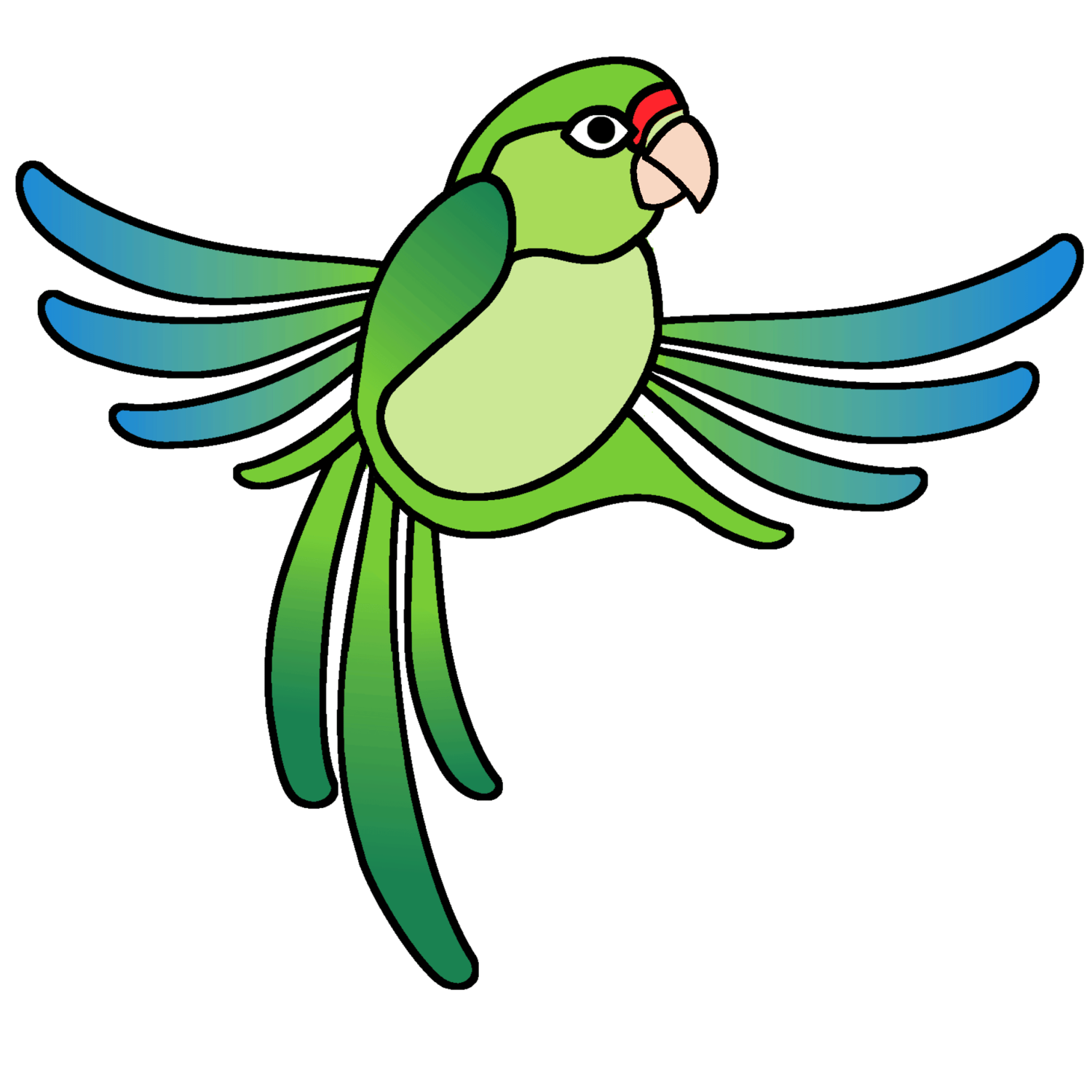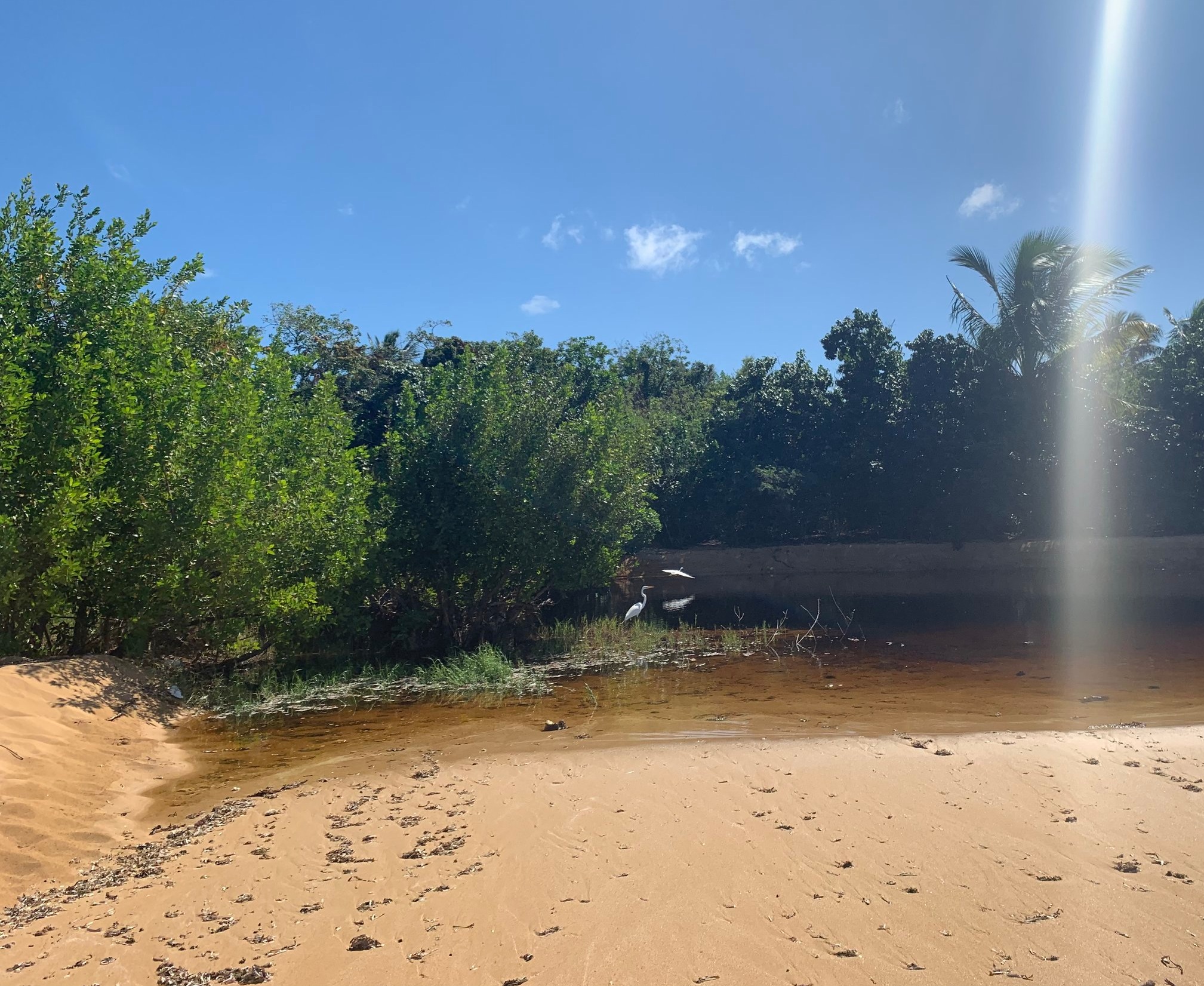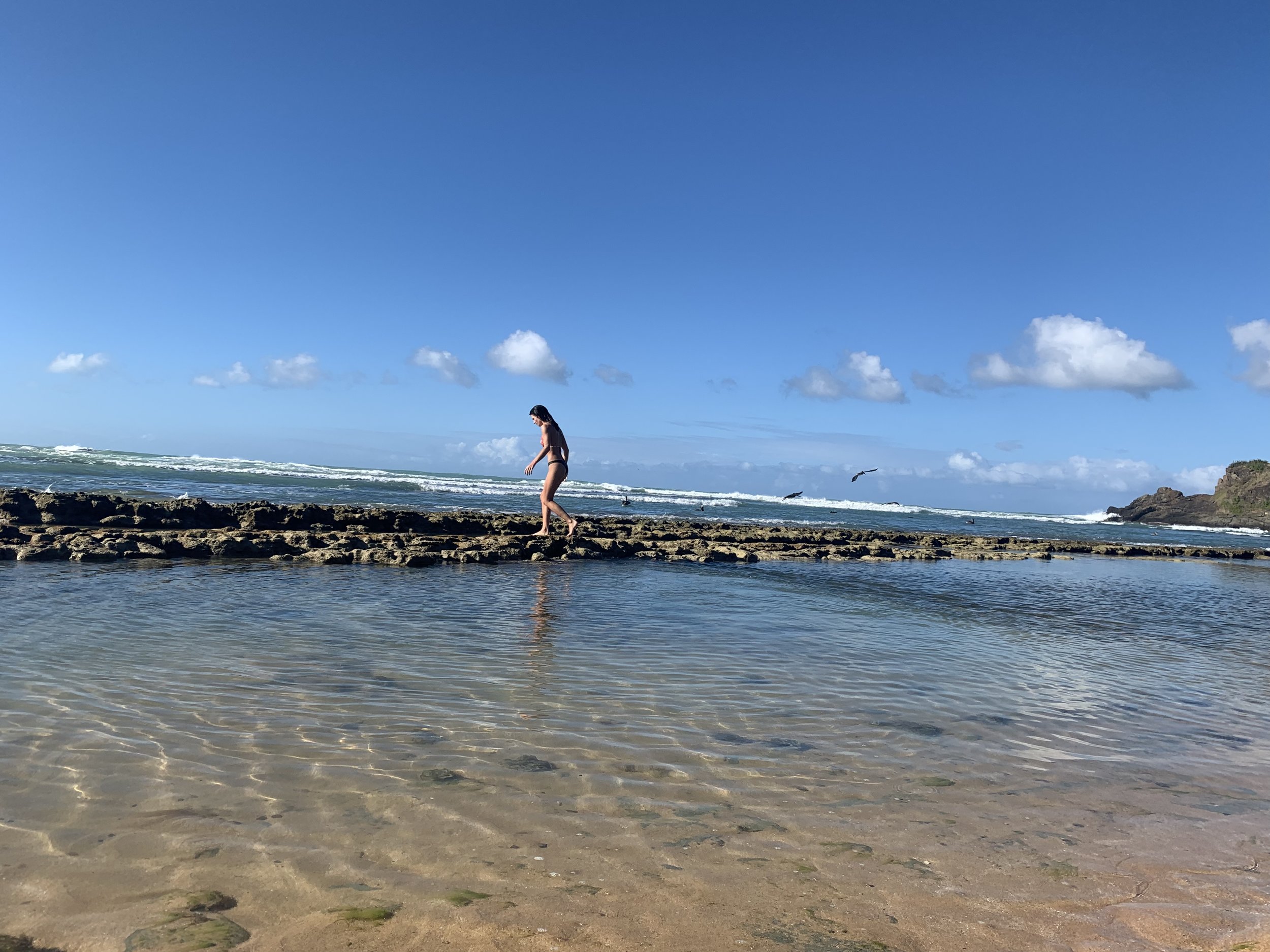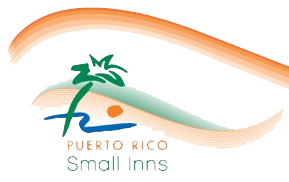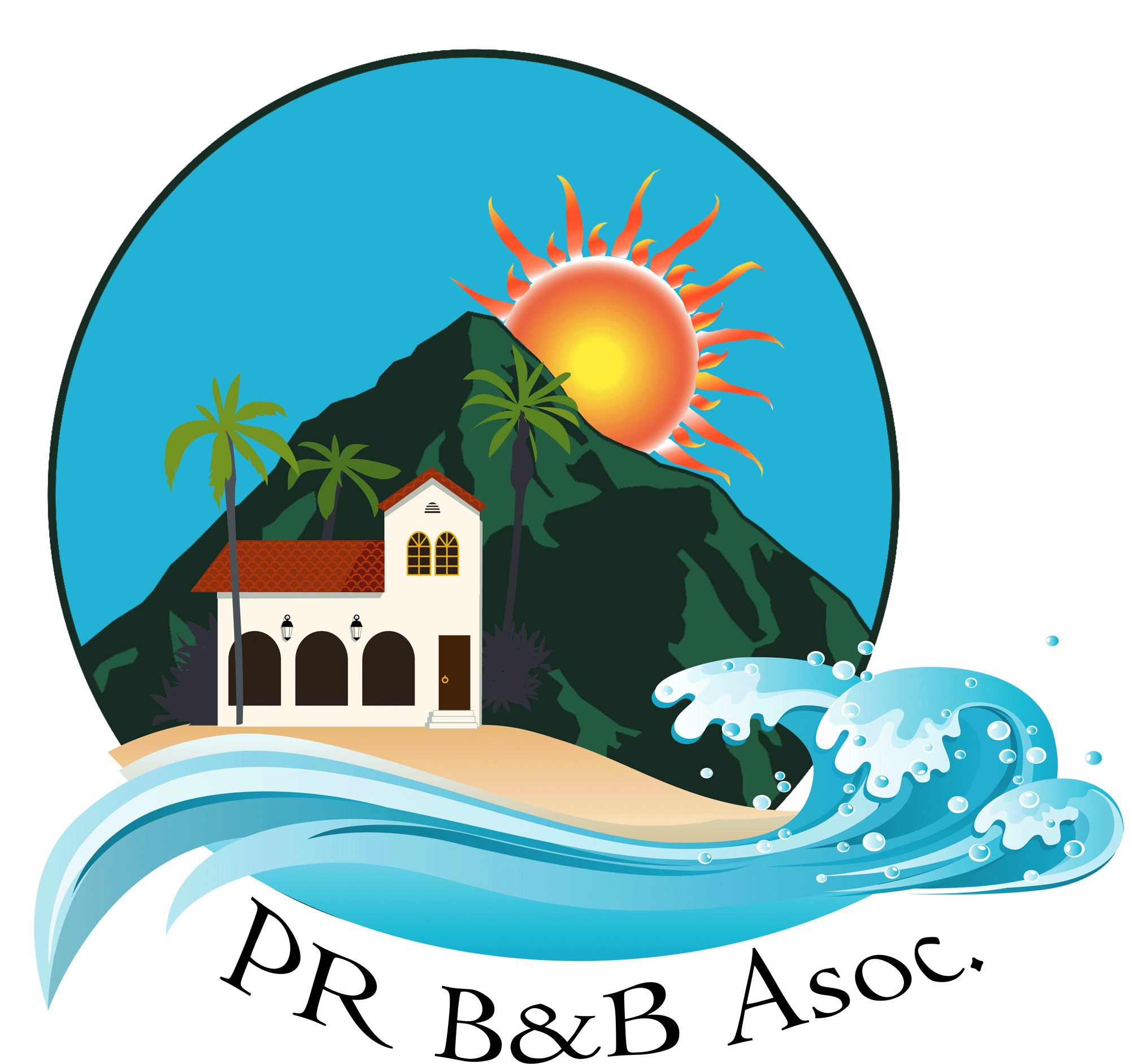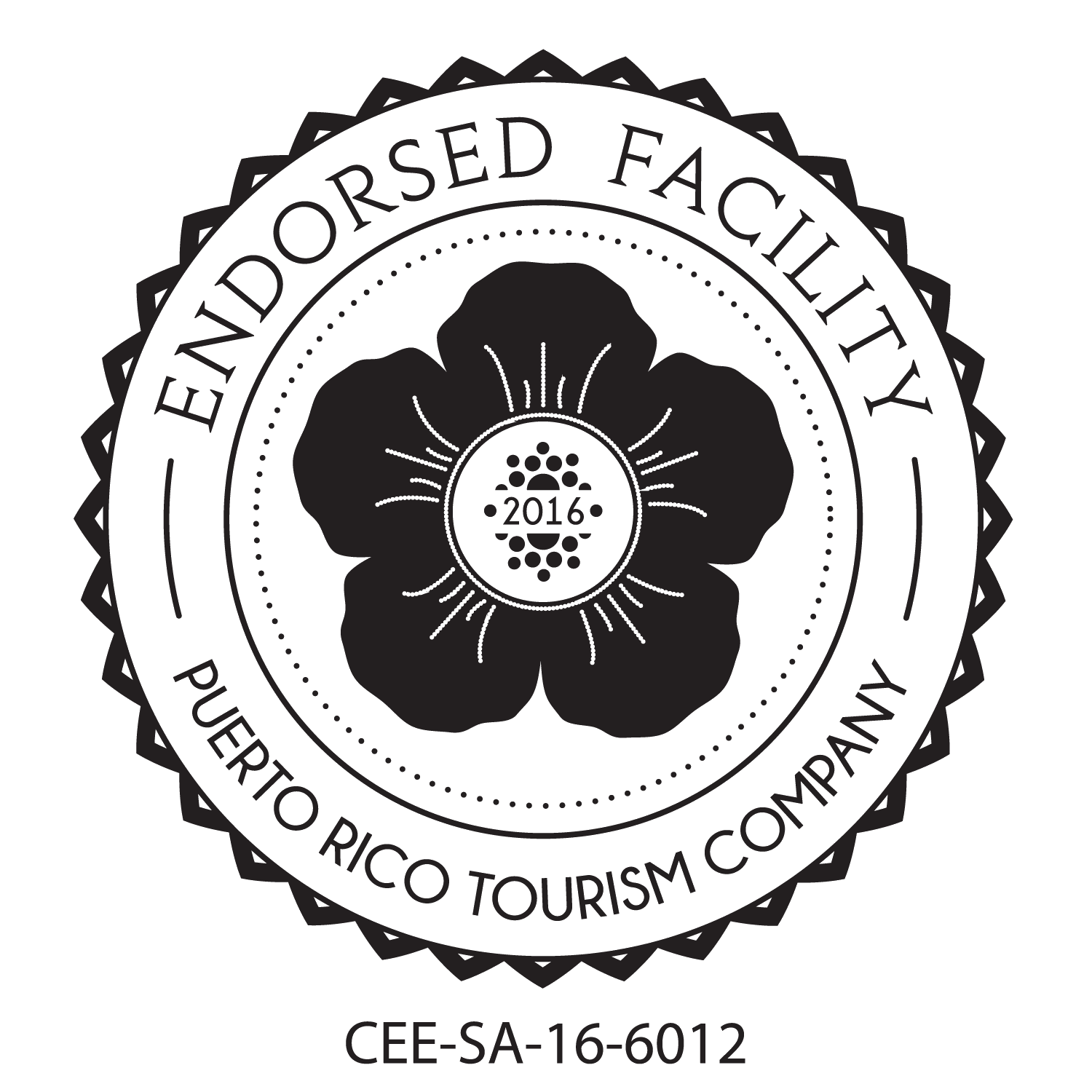Puerto Rico’s wide variety of beaches means there’s a spot for every beach-goer, whether you’re looking for piña coladas and Bluetooth stereos bumping the latest hits, or a place geared more towards nature lovers. And if you’re interested in Rainforest Inn, you’re likely one of those folks interested in an Off-the-Beaten-Path experience.
After a three day period of heavy rain forced me to put off my planned hike to El Toro peak, Bill told Cristie, another volunteer, and I that he would drive us to do a different sort of hike, one that would take us out along an isthmus, between a bay and a lagoon, to a “secret" - or at least hidden - beach.
Cristie and I both jumped at the opportunity to combine a hike with an afternoon at the beach, a little exercise separated by some relaxation. The two of us also agree that we don’t necessarily want to be surrounded by people while trying to catch some rays; not in the sense that we wanted to take our clothes off or anything - though there is a nude beach somewhere nearby where we went (Playa Colora) if that’s your cup of tea…Rather, Cristie and I both welcome and revel in solitude and having pristine nature around us.
To get to this hidden spot you’ll drive towards Fajardo, then veer left out onto a bit of an outcropping that houses the huge Conquistador resort and a restaurant Bill and Renée recommend (La Estacíon) as well as a historical site and parks along the Seven Seas bay. If you’re headed where we went, you’re looking for Balneario Seven Seas.
Map of the grounds.
There’s a secure parking lot for your car; people camp overnight and leave their cars in this lot. We recommend parking here (fee is less then $5) unless you’re just dropping someone off, as Bill did with us, in which case you walk through to the beach.
Bill’s directions for how to get to the place we were looking for are as follows: “Walk along Seven Seas beach to the West, towards the opposite end where the rocks start and you’ll see a small trail opening. Just head along this. There will be a fork that goes to the right at one point - DO NOT take this fork.” (Ok? More on this later.) “ Then just keep going until you come out on the water. You have arrived.” He approximated it would take a little less than an hour.
However, when you reach the first fork, be sure to take a right to begin the hike towards the secluded beach. Going left at this point will lead you back to the inhabited area.
It actually took only 30 minutes, rather than closer to an hour, to travel the length of the trail. And Bill’s directions were accurate, except parts of the trail were flooded with muddy water I was not about to step into in a pair of Tevas. This flooding seems to have been expected, though, as there is a smaller, slightly-concealed trail circumnavigating the flooded sections. We didn’t spot it on our way in, but as I was scrambling along a mangrove root trying to avoid whatever lurked in the water below, two men jaunted by ten feet away on this other path, laughing loudly (probably at me). Cristie backtracked and found the entrance to the side trail, which passes by all the parts deep enough to flood and lets you back out in a lovely room walled by mangroves, roofed in by their canopy.
Cristie took this picture standing on the side trail, and I’m standing on the main one, so just keep in mind that on your way in, the side trail will be always to your right (and to your left on the way back). And while Bill said not to take the trail that goes off to the right, he was talking about a much-wider, clearly marked trail. This side trail was good to go.
We continued on our way, chorused by the scuttling of fiddler crabs fleeing from us giants who entered their territory unannounced. After coming off the side trail, you don’t have much further to go at all before the blue sky and yellow sand appears at the end of the tunnel. We emerged from the shadows into bright sunlight sparkling off the turquoise water. Four other tourists (blistered-red skin is a dead giveaway - WEAR YOUR SUNSCREEN!!) were there and waves were breaking far out at sea on a reef. Pelicans prove this reef is still healthy, as they dove again and again into to the surf, fishing and splashing all about.
We decided to walk towards the left first, moving along the sand and spotting two lovely white birds resting in the estuary. Bird watchers would likely delight seeing this preserve.
Despite the sign on the beach indicating that it’s too dangerous to swim, it’s generally safe here. The warning likely refers to marine life and corals rather than dangerous waves or undertows.
One scared bird takes flight while the other stands her ground as we pass by.
We kept moving to the left, where the reef appeared to end since the waves were breaking closer and closer to the shore. They were incredibly powerful, churning the water so it looked almost dangerous, not something we cared to swim in. Glad we did the walk but wanting to set up “camp” in a spot we could safely swim from, Cristie and I backtracked, past the four sunburnt tourists, and moved by the trail opening on to the right, where we found an adolescent palm tree to leave our stuff by.
We had a whole strip of beach to ourselves (that speck of a person in the background is Cristie, gone for a walk).
A shoal of bleached coral created a little pool just for us and a few clumps of seaweed. The tide receded throughout the afternoon, exposing more of this shoal so that, just before we went back to meet Bill, we were able to scramble across the coral, which was slippery in some spots and sharp, jagged, and dry in others. Small crustaceans in their tiny, cone-shaped shells have colonized this bleached reef, and minnows dart from pool to pool through secret chambers in the coral. The pelicans eyed us lazily, uninterested because they still have claim to their fish-populated reef further out.
Exploring the shoal after the tide has gone out. The pelicans are still fishing in the background, unbothered.
Saddened to leave, we took our time navigating back to Seven Seas from Escondida Beach (I’ve admittedly hidden the name this far in the blog to mimic its hidden nature). Escondida is sometimes referred to as “Governor’s Beach” because the Governor’s beach house sits further down along the left side; we’d have seen it had we kept walking past the churning surf I described earlier. The off-the-beaten-track status is what makes this place special, and I don’t want this post to ruin that in any way.
Bill assures me there are other factors keeping Playa Escondida from becoming as populated as the other nearby beaches. Mainly, the hike one has to make to get out to Escondida deters families with kids and people with big coolers and stereos and lots of beach gear from even thinking about making the trek. And because the government restricts commercialization or even residential growth in this area, the trek is likely to (hopefully) never shorten. But for nature lovers, bird-watchers, those hoping to snorkel along a reef where Bill has seen manta rays and sea turtles and other incredible ocean wildlife, or just those looking for a bit more of a classic Caribbean island beach untouched by capitalism and beach bars, Escondida is THE spot on the eastern side of Puerto Rico.
I highly recommend it and will likely take my mom and boyfriend there when they visit even though it is further than the beautiful Balneario Monserrate beach in Luquillo, just because Escondida is more unique, and an experience for nature lovers and we’ll only have time for one beach day before heading to San Juan.
If you do head out to Escondida, here are my tips, per my brief experience:
Bring a beach chair or hammock, or an extra towel, to sit on/in. The high tide seems to cover most of the sand, because it was all wet with no real stretch of dry, fluffy stuff. Cristie and I decided to just lounge in the surf, as the sand is soft and clean. But if that doesn’t sound ideal to you, then bring something else to put between you and the ground. I think you could definitely find a spot to secure a hammock, though I didn’t count out steps or anything.
Pack water and snacks, if not an entire picnic. If you make the hike out here, even though it’s only 30 minutes one way and not hard at all, you’re going to want to spend as much time enjoying this piece of pristine tucked-away coastline as possible. And since there’s no beach bar, whatever you pack is what you get. Luckily, Renée can prepare a picnic lunch that feeds two (at an additional cost added on to your stay at the Inn).
Bring snorkel gear! If you’re a brave swimmer, you can pass by the bleached coral shoal and paddle out towards the still-alive reef. Bill has seen incredible large pelagic fish (including hammerhead sharks) as well as beautiful colorful schools out there and can give you more tips as well as where to rent or buy snorkel gear, if you don’t have your own. Please talk to Bill first though before you go as there are hazards when you go out to these reefs and there is the risk of drowning if you are not experienced in deep-sea adventures. I stayed in the tidal pools.
And if you don’t want to do the hike, or prefer beach-going where there are still restaurants and restrooms (though not always open) nearby, Balneario Seven Seas - has a variety of beaches in its vicinity. Seven Seas Beach is a great spot for avid-hammockers to hang up and is generally less-crowded than Playa Luquillo.
This is Seven Seas Beach; check out all those spots to hang a hammock!
Oh, and that side trail leading to the right that Bill adamantly directed us not to take? If you want to get frisky…that’s your spot, apparently. After we’d arrived back safely, Bill explained that trail takes you to Colorá Beach (mentioned above). A graffitied sign stakes out this fork from the main trail to Escondida, so you won’t be confused between the side trail intended to skirt flooded areas and the trail to Colorá. I perused photos posted to Google Maps and Colorá does look beautiful, very similar to Escondida other than giant rocks dotting the sand that must give people…privacy.
Photo of me at Seven Seas Bech, taken by Bill! That strip of trees in the background conceals the trail you’ll take out to Escondida (or… maybe…Colorá? (-; )
All that to say, if you’re someone who agrees “No beach bar, no problem!”, and you’re a nature lover as most Rainforest Inn guests are, you’ll be glad you made time for a visit to Playa Escondida.
